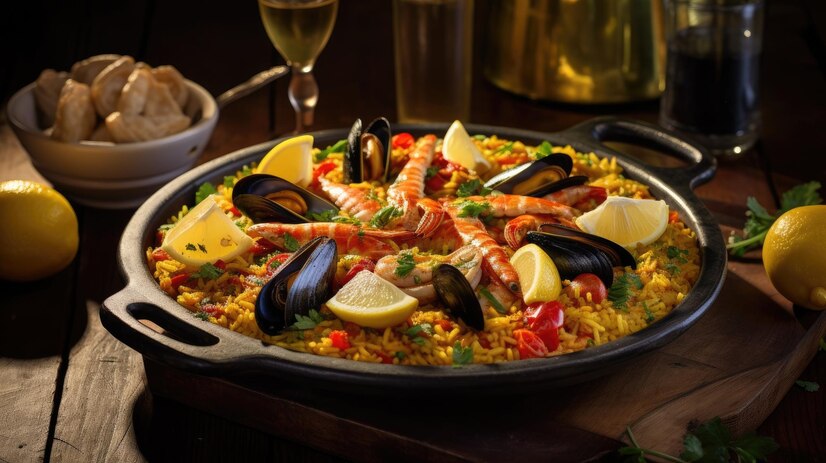When one thinks of Spanish cuisine, the vibrant colors, bold flavors, and rich history of paella often come to mind. Originating from the Valencia region on the eastern coast of Spain, paella has evolved from a humble peasant dish to a globally renowned culinary delight. Its journey through time is as diverse and captivating as the dish itself, reflecting the cultural tapestry of Spain.
Origins and History
The origins of paella can be traced back to the fields of Valencia, where farmers would cook rice with whatever ingredients were readily available to them. Originally, this might have included rabbit, snails, and a variety of beans. Over time, as trade flourished and ingredients became more accessible, the dish evolved to incorporate seafood, chicken, and a myriad of vegetables.
The name “paella” itself is derived from the Old French word for “pan,” reflecting the vessel in which it is traditionally cooked. The wide, shallow pan allows for the rice to cook evenly and develop the coveted socarrat—a crispy layer at the bottom that adds depth and texture to the dish.
Ingredients and Preparation
At the heart of paella lies rice—the bomba or Calasparra varieties being the most preferred due to their ability to absorb flavors without becoming mushy. Saffron, the world’s most expensive spice by weight, imparts its distinct golden hue and subtle aroma to the dish. This luxurious ingredient is often referred to as “red gold” and adds a touch of opulence to the humble rice.
The choice of protein varies depending on the region and personal preference. Seafood lovers may opt for a seafood paella featuring shrimp, clams, mussels, and squid, while those with a penchant for land-based fare may prefer a Valencian paella with rabbit, chicken, and snails. Vegetarian and vegan variations are also popular, showcasing an array of fresh vegetables such as artichokes, bell peppers, and tomatoes https://turfok.net.
The preparation of paella is a labor of love, requiring patience, attention to detail, and a deep understanding of the ingredients. The rice is first sautéed with aromatics such as onions, garlic, and tomatoes before being simmered in a flavorful broth infused with saffron and paprika. The proteins and vegetables are then added, allowing them to impart their essence to the dish as it slowly cooks to perfection.
Cultural Significance
Paella is more than just a dish; it is a symbol of Spanish identity and hospitality. Traditionally cooked and enjoyed outdoors, paella brings people together, fostering a sense of community and conviviality. Whether prepared for a family gathering, a festive celebration, or a casual Sunday afternoon, paella has the remarkable ability to create lasting memories and forge bonds between people.
Its versatility and adaptability have also contributed to its widespread popularity. From humble beginnings in the fields of Valencia to Michelin-starred restaurants around the world, paella has transcended boundaries and captivated the palates of food enthusiasts everywhere.
Conclusion
In conclusion, paella is not merely a culinary creation; it is a cultural icon that embodies the spirit of Spain. Its rich history, diverse flavors, and communal nature make it a beloved dish cherished by people of all backgrounds. Whether enjoyed by the seaside in Valencia or at a bustling tapas bar in Barcelona, paella continues to enchant and delight, inviting us to savor the essence of Spanish cuisine with every mouthful.





_3-6.jpg)



